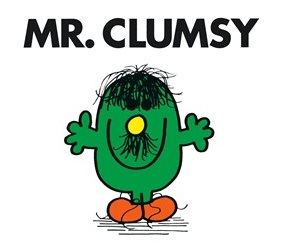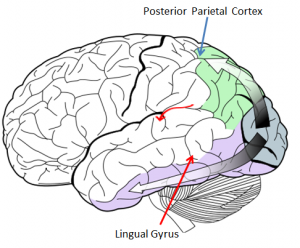Resolution of life-long clumsiness in a 9-year old boy over 6 weeks.
 Proprioception is the ability of your brain to sense the relative position of your body parts in space, and the ability to move your body accurately without having to look at what you are doing. Without accurate proprioception you would not be able to drive a car as you would need to constantly look at what your arms and legs were doing. When proprioceptive function is impaired, for instance not knowing precisely where your leg is when your eyes are closed, you are more likely to be clumsy and accident prone.
Proprioception is the ability of your brain to sense the relative position of your body parts in space, and the ability to move your body accurately without having to look at what you are doing. Without accurate proprioception you would not be able to drive a car as you would need to constantly look at what your arms and legs were doing. When proprioceptive function is impaired, for instance not knowing precisely where your leg is when your eyes are closed, you are more likely to be clumsy and accident prone.
Seemingly without effort, we adjust our movements to continuously changing environments. After initiation of a goal-directed movement, the motor command from the brain is under constant control of sensory feedback loops. The main sensory signals contributing to movement control are vision and proprioception. The posterior parietal cortex (rear part of the brain) plays a prominent role in processing sensory information for movement control. A recent study has shown that there is an area in this part of the brain which processes proprioceptive information only when coordinating your body1. This means that if the parietal cortex is not wired right, and you close your eyes, the clumsiness will be evident (see video below).
Chiropractic care assists brain function in many ways, one of which is proprioceptive function, and this improves the accuracy of the internal brain map so your brain knows exactly what is going on all the time. This process of accurately wiring the brain is especially important during childhood as the brain matures through to age twenty ?
I would like to thank you for the care and attention you showed to my son Cody.
 When we first arrived at your practice I was delighted with your holistic approach to assessing my son rather than just simply “adjusting” him. I am delighted with this approach as it allows me, as a parent, to understand the underlying issues that present themselves. In Cody’s case: a “pain in the neck”.
When we first arrived at your practice I was delighted with your holistic approach to assessing my son rather than just simply “adjusting” him. I am delighted with this approach as it allows me, as a parent, to understand the underlying issues that present themselves. In Cody’s case: a “pain in the neck”.
As you came to understand, Cody has always been a little more clumsy than his peers. This was originally noticed by my wife and I when he was a toddler. He seemed to be falling more than other children; ran into furniture continually and seemed to have a general lack of awareness of where his body was in relation to other people and things. This continued through primary school and was most prevalent in sport. While playing soccer or touch rugby, he seemed to be on the ground as much as as he was on his feet!
After our first appointment and assessment with you I was finally able to understand why his spatial awareness and lack of coordination/balance was an issue. After working with you for 6 weeks, I was very impressed with his progress and saw major improvements in his balance and coordination.
In addition to Cody’s overall improvement, visiting your office is always a pleasant affair thanks to the effervescent Pip.
Scott Boness
© Spinewave 2014
Reference:
- Reichenbach, A et al. A key region in the human parietal cortex for processing proprioceptive hand feedback during reaching movements. NeuroImage. 2014. 84: 615-625.
